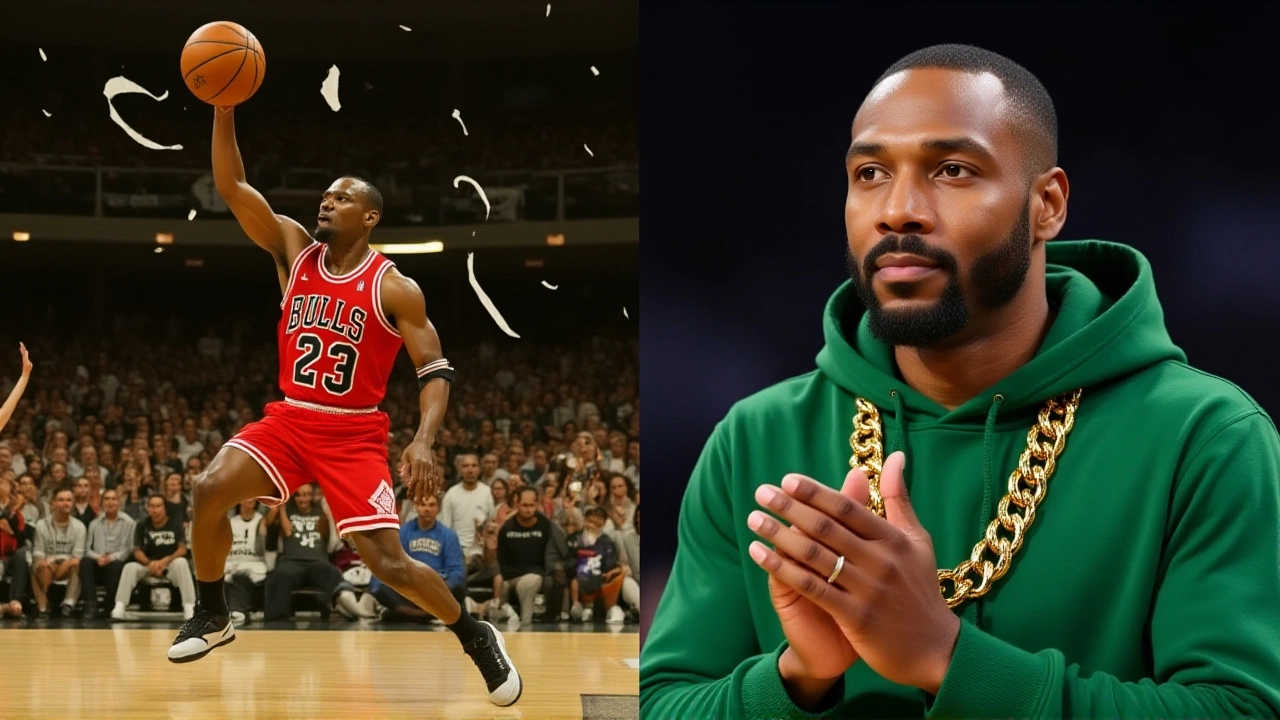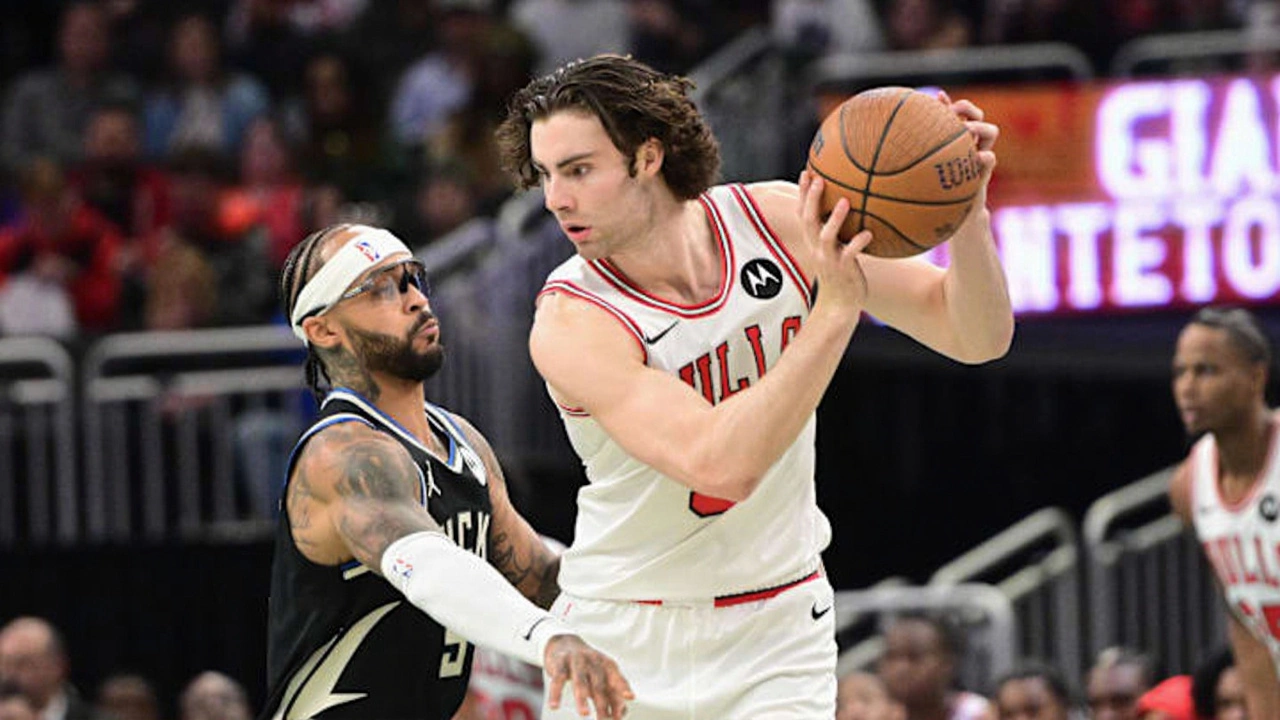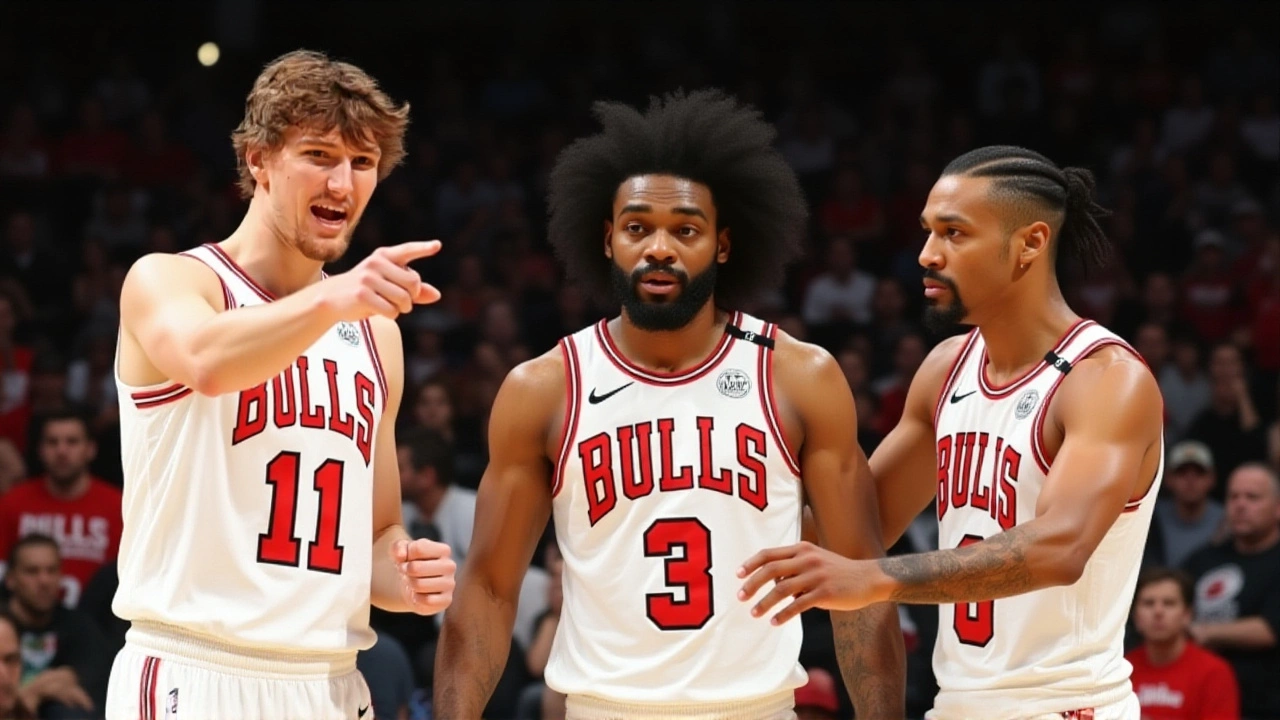- 0
When Josh Giddey stepped onto the court at the Delta Center on Sunday night, it wasn’t just a return — it was a lifeline. The 23-year-old Australian point guard, sidelined for two games with a right ankle sprain, was officially cleared to play against the Utah Jazz, ending a brutal slump that had dragged the Chicago Bulls from conference leaders to eighth place. The injury, suffered during a chaotic third-quarter sequence against the Cleveland Cavaliers on November 8, 2025, wasn’t just a bump — it was a seismic disruption. And now, with Giddey back and Coby White expected to join him, the Bulls are hoping for a spark — not just in scoring, but in soul.
The Fall After the Rise
Before Giddey went down, the Bulls were flying. Over his last five games, he was averaging a staggering 23.0 points, 10.6 assists, and 10.4 rebounds — a near-triple-double night after night. He wasn’t just playing; he was orchestrating. The team’s offense hummed at 118.2 points per game during that stretch. Then, the ankle rolled. And everything changed.Without him, the Bulls didn’t just lose games — they lost identity. Four straight defeats. Scoring dropped to 98.5 points per game. Their offensive rating plummeted. Fans noticed. Coaches winced. Even the locker room felt quieter. "He’s the engine," one anonymous assistant coach told The Athletic. "When he’s out, we’re just trying to get by. We’re not trying to win."
How the Injury Happened — And Why It Wasn’t as Bad as Feared
The injury occurred with 6:03 left in the third quarter against the Cavaliers. De’Andre Hunter, known for his crafty drives, pulled off a sharp crossover that sent Giddey stumbling. His right foot twisted under him, but he didn’t scream. Didn’t clutch his ankle dramatically. Just winced, got up slowly, and walked off under his own power. He even returned to finish the game with 15 points, nine rebounds, six assists, and two steals.That’s the kind of toughness that makes Giddey special. But the Chicago Bulls medical staff, led by Dr. Mark Cohen, took no chances. He was ruled out for the next two games — against the San Antonio Spurs and Detroit Pistons — despite showing no signs of swelling or instability. "We didn’t want him to test it on a back-to-back," said Paul Schissel, the team’s Director of Sports Performance. "This isn’t just about today. It’s about the next 70 games."
The Ripple Effect: Who Filled the Void?
With Giddey out, the ball-handling duties fell to a patchwork of guards: Tre Jones, Kevin Huerter, and Ayo Dosunmu. Jones, a defensive specialist, averaged just 4.1 assists in 28 minutes. Huerter, a shooter, struggled to create for others. Dosunmu, a former second-round pick, showed flashes but lacked the vision to elevate the entire offense.It wasn’t just about assists. It was about rhythm. The Bulls’ ball movement dropped 18% without Giddey. Their pick-and-roll efficiency fell from 1.12 points per possession to 0.89. And their bench, already thin, lost its spark. "We were running sets, but nobody was reading the defense," said veteran forward Zach Collins, who was sidelined with a scaphoid fracture. "It felt like we were playing chess with one hand tied behind our back."

White’s Return Adds Another Layer
The good news didn’t stop with Giddey. Coby White, the 24-year-old shooting guard, also returned to full practice on Friday, November 14, 2025. Though still listed as questionable, sources close to the team say he’s "90% there." White, who missed the same two games due to a similar ankle sprain, brings spacing, scoring punch, and a veteran’s poise. His presence opens driving lanes for Giddey and stretches defenses — something the Bulls desperately need against the Jazz’s physical front line."They’re two guys who make everyone else better," said K.C. Johnson of Chicago Sports Network. "When they’re both on the floor, the offense flows like a river. When they’re out? It’s a drought."
What’s Next? The Back-to-Back Test
Sunday’s game against the Jazz is just the opener of a brutal back-to-back. The Bulls fly home to face the Denver Nuggets at the United Center on Monday, November 17, 2025. And here’s the twist: Giddey was already confirmed to be "not on the injury report" for that game — a sign the team plans to let him play through it.But they’re being careful. Schissel and the training staff have reportedly capped Giddey’s minutes at 32-34 on Sunday, with the expectation he’ll play closer to his usual 36+ on Monday. The Nuggets, meanwhile, are dealing with their own injuries — Nikola Jokić is questionable with a wrist sprain, and Christian Braun is out for six weeks. This isn’t just a bounce-back game for the Bulls. It’s a chance to reassert themselves before the West’s elite teams start rolling.

Why This Matters Beyond the Box Score
The Chicago Bulls are valued at $3.55 billion, according to Forbes. But money doesn’t win games. Chemistry does. Leadership does. And right now, Giddey is the heartbeat of this team. His return isn’t just about stats — it’s about morale. It’s about proving they can still compete in a crowded Eastern Conference. It’s about reminding fans that this team, despite its flaws, still has a future.For a franchise that hasn’t made the playoffs since 2022, every win matters. But this one? This one feels different. Because when Giddey is on the court, the Bulls don’t just play. They believe.
Frequently Asked Questions
How serious was Josh Giddey’s ankle sprain, and why did he miss only two games?
Giddey’s right ankle sprain was graded as a mild (Grade 1) injury — no ligament tears or structural damage. He was ruled out for two games as a precaution, not because of severity. His full participation in Friday’s practice confirmed he was ready, and the Bulls’ medical team prioritized long-term health over rushing him back. The team’s cautious approach paid off: he showed no swelling or instability during recovery.
What impact did Giddey’s absence have on the Bulls’ offensive efficiency?
Without Giddey, the Bulls’ offensive rating dropped from 115.4 to 98.5 points per game — a 19.7-point decline. Their assist-to-turnover ratio fell from 1.9 to 1.3, and their pick-and-roll efficiency plummeted by 20%. Giddey’s ability to read defenses and distribute under pressure was irreplaceable, turning the Bulls from a top-10 offense into a bottom-five unit during his absence.
Is Coby White fully healthy, and how will his return change the team’s dynamics?
White is listed as questionable but fully participated in practice and is expected to play. His return adds spacing and scoring threat, forcing defenses to respect his three-point range and opening driving lanes for Giddey. When both are healthy, the Bulls’ half-court offense becomes significantly more dynamic, with White as a secondary playmaker and Giddey as the primary facilitator.
Why is the back-to-back against the Nuggets so important for the Bulls?
The Nuggets are a top-three team in the West, and their injuries — especially Nikola Jokić’s wrist sprain — create a rare opportunity. If the Bulls can win both games of this back-to-back, they’ll snap their four-game losing streak and climb back into playoff contention. More importantly, a win over Denver would signal they’re still a legitimate contender, not just a team trying to survive.
What’s the long-term outlook for Giddey’s health this season?
Giddey’s ankle is not considered a chronic issue, and his youth (23) and athleticism reduce recurrence risk. The Bulls are monitoring his workload closely, especially with a packed December schedule. If he avoids overuse and continues proper rehab, he’s on track to play all 82 games. His durability will be critical — the Bulls’ playoff hopes hinge on him staying healthy.
How does this injury compare to past Bulls point guard setbacks?
Unlike Derrick Rose’s ACL tears or Lonzo Ball’s chronic knee issues, Giddey’s injury is minor and non-structural. The closest parallel is Zach LaVine’s 2021 ankle sprain, which sidelined him for three games — and the Bulls went 1-2 without him. Giddey’s absence had a worse impact because he’s the primary playmaker, not just a scorer. His return is more vital than LaVine’s ever was.

